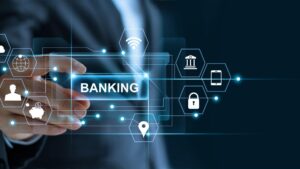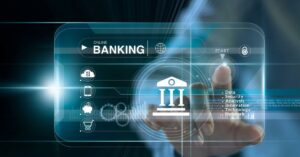Cybersecurity in Banking: Safeguarding the Future of Finance

In today’s digital age, banking is increasingly driven by technology. From mobile banking apps to online payment platforms, consumers expect fast and secure access to financial services. However, this reliance on digital channels has opened the door to new cybersecurity risks. As cybercriminals become more sophisticated, the banking sector faces an ongoing challenge: how to protect sensitive customer data and financial systems from cyberattacks.
In this blog, we’ll explore the importance of cybersecurity in banking, the key threats financial institutions face, and the best practices banks can adopt to safeguard their systems and customers.
Why Cybersecurity is Critical in Banking
The banking industry is a prime target for cybercriminals due to the high value of the data it holds. Financial institutions manage massive amounts of sensitive information, including personal identification details, account numbers, transaction data, and payment records. A breach in a bank’s cybersecurity system could result in significant financial losses, identity theft, reputational damage, and loss of customer trust.
Given the increasing frequency and severity of cyberattacks, regulatory bodies have heightened security requirements for banks. Compliance with regulations such as the General Data Protection Regulation (GDPR) and the Federal Financial Institutions Examination Council (FFIEC) standards is mandatory, making robust cybersecurity not only a matter of protection but also of regulatory necessity.
Common Cybersecurity Threats in Banking
- Phishing Attacks:
Phishing is one of the most common cyber threats in the banking sector. Hackers use fraudulent emails, messages, or websites to trick users into providing sensitive information like passwords, account numbers, or Social Security numbers. Despite increased awareness, phishing remains highly effective due to the sophistication of these scams. - Malware and Ransomware:
Malware and ransomware attacks can severely disrupt banking operations by infiltrating systems and locking access to data until a ransom is paid. Banks are particularly vulnerable to these attacks, as they rely on constant uptime and data accessibility to serve customers. - Insider Threats:
Insider threats arise when current or former employees intentionally or unintentionally expose sensitive information or provide unauthorized access to cybercriminals. Whether it’s through negligence or malicious intent, insiders pose a significant security risk to banks. - Distributed Denial of Service (DDoS) Attacks:
DDoS attacks flood a bank’s network with traffic, overwhelming its servers and causing disruptions in service. These attacks can render online banking services, ATMs, and other digital platforms unusable, which can damage the bank’s reputation and cause financial loss. - Identity Theft and Fraud:
Cybercriminals use various methods, including phishing, data breaches, and malware, to steal personal information and commit fraud. Once criminals have access to a user’s financial data, they can open unauthorized accounts, withdraw funds, or make fraudulent purchases, harming both the customer and the bank. - Third-Party Risk:
Banks often work with third-party vendors for services like cloud storage, payment processing, or customer support. While these partnerships are essential for efficiency, they also introduce additional cybersecurity risks if the vendor’s security protocols are weak.
Best Practices for Strengthening Cybersecurity in Banking
To protect their systems, data, and customers, banks must adopt a proactive and multi-layered approach to cybersecurity. Here are some essential best practices:
1. Implement Multi-Factor Authentication (MFA):
MFA adds an extra layer of security by requiring customers and employees to provide two or more pieces of evidence (such as a password and a fingerprint) before granting access to an account. This makes it significantly harder for attackers to gain unauthorized access, even if they obtain login credentials.
2. Use Advanced Encryption:
Encrypting data, both in transit and at rest, ensures that sensitive information remains secure even if intercepted by cybercriminals. Banks should use strong encryption algorithms to protect financial transactions and customer data from unauthorized access.
3. Deploy AI and Machine Learning for Threat Detection:
Artificial intelligence (AI) and machine learning (ML) can help banks identify potential cyber threats by analyzing patterns of behavior in real-time. These technologies can detect unusual activities, such as fraudulent transactions or unauthorized access, and trigger alerts before a major breach occurs.
4. Conduct Regular Security Audits:
Routine security audits and vulnerability assessments help banks identify and fix weaknesses in their cybersecurity defenses. By regularly reviewing their systems and processes, banks can stay ahead of evolving threats and ensure compliance with regulatory standards.
5. Employee Training and Awareness:
Human error is one of the biggest cybersecurity risks banks face. Employees should be regularly trained on cybersecurity best practices, such as identifying phishing emails, managing passwords securely, and following data protection protocols. Building a culture of security awareness can prevent many common cyber threats.
6. Collaborate with Industry Partners:
Cybersecurity in banking is a shared responsibility. Financial institutions should collaborate with industry partners, government agencies, and cybersecurity organizations to share information about threats and learn from each other’s experiences. Collaborating on threat intelligence can help banks stay ahead of emerging cyber threats.
7. Monitor and Secure Third-Party Vendors:
Banks must ensure that their third-party vendors follow strict cybersecurity protocols. This includes conducting thorough due diligence, implementing secure access controls, and requiring regular security audits from all third-party partners. Monitoring these relationships minimizes the risk of third-party breaches.
8. Adopt Zero-Trust Architecture:
Zero-trust security models operate under the assumption that no one, whether inside or outside the organization, can be trusted by default. This approach requires continuous verification of users and devices accessing the network, making it harder for cybercriminals to exploit weak points in the system.
The Future of Cybersecurity in Banking
The future of banking cybersecurity will be shaped by emerging technologies and evolving threats. AI and ML will continue to play a pivotal role in automating threat detection and response, enabling banks to react faster to potential attacks. Additionally, blockchain technology is gaining traction as a secure way to process and verify financial transactions, reducing fraud and enhancing transparency.
As cyber threats become more sophisticated, regulatory bodies will likely introduce stricter requirements for financial institutions. Banks will need to stay updated with changing regulations, such as the introduction of stronger data privacy laws and enhanced reporting requirements for cyber incidents.
Ultimately, cybersecurity will remain a top priority for banks as digital transformation accelerates. The ability to protect sensitive data and maintain trust will be a key differentiator for banks competing in a technology-driven financial landscape.
Conclusion
Cybersecurity is no longer a back-office concern in the banking industry—it is a business-critical priority. With the increasing complexity of cyber threats, banks must invest in cutting-edge technologies, adopt best practices, and foster a culture of security to protect their customers and operations. By taking a proactive approach to cybersecurity, banks can mitigate risks, maintain trust, and safeguard the future of digital finance.







